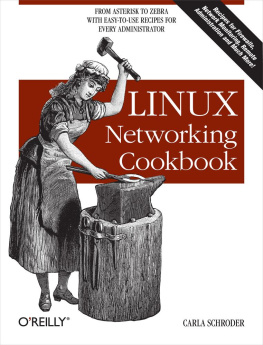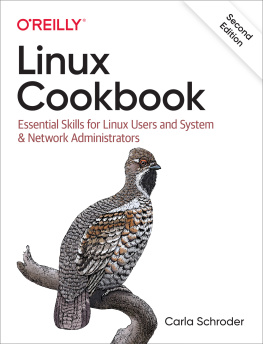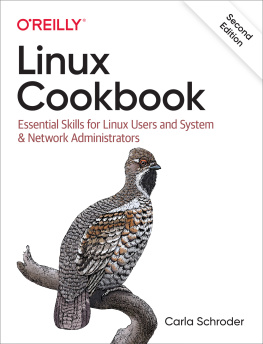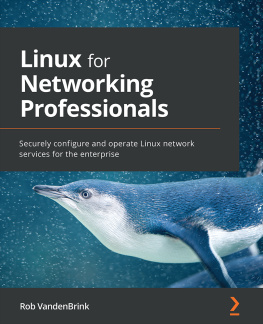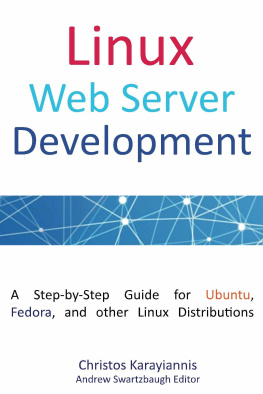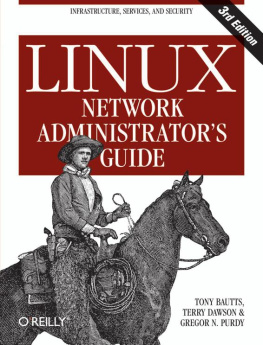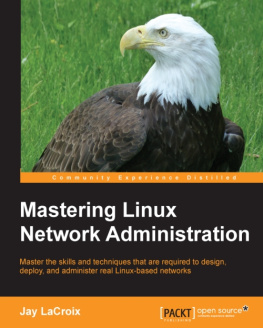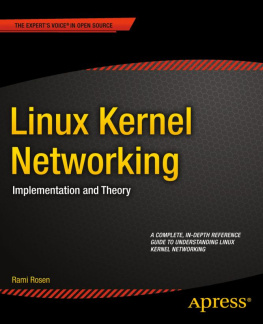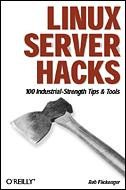Carla Schroder - Linux Networking Cookbook
Here you can read online Carla Schroder - Linux Networking Cookbook full text of the book (entire story) in english for free. Download pdf and epub, get meaning, cover and reviews about this ebook. year: 2007, publisher: OReilly Media, genre: Computer. Description of the work, (preface) as well as reviews are available. Best literature library LitArk.com created for fans of good reading and offers a wide selection of genres:
Romance novel
Science fiction
Adventure
Detective
Science
History
Home and family
Prose
Art
Politics
Computer
Non-fiction
Religion
Business
Children
Humor
Choose a favorite category and find really read worthwhile books. Enjoy immersion in the world of imagination, feel the emotions of the characters or learn something new for yourself, make an fascinating discovery.
- Book:Linux Networking Cookbook
- Author:
- Publisher:OReilly Media
- Genre:
- Year:2007
- Rating:4 / 5
- Favourites:Add to favourites
- Your mark:
Linux Networking Cookbook: summary, description and annotation
We offer to read an annotation, description, summary or preface (depends on what the author of the book "Linux Networking Cookbook" wrote himself). If you haven't found the necessary information about the book — write in the comments, we will try to find it.
This soup-to-nuts collection of recipes covers everything you need to know to perform your job as a Linux network administrator, whether youre new to the job or have years of experience. With Linux Networking Cookbook, youll dive straight into the gnarly hands-on work of building and maintaining a computer network.
Running a network doesnt mean you have all the answers. Networking is a complex subject with reams of reference material thats difficult to keep straight, much less remember. If you want a book that lays out the steps for specific tasks, that clearly explains the commands and configurations, and does not tax your patience with endless ramblings and meanderings into theory and obscure RFCs, this is the book for you.
You will find recipes for:
- Building a gateway, firewall, and wireless access point on a Linux network
- Building a VoIP server with Asterisk
- Secure remote administration with SSH
- Building secure VPNs with OpenVPN, and a Linux PPTP VPN server
- Single sign-on with Samba for mixed Linux/Windows LANs
- Centralized network directory with OpenLDAP
- Network monitoring with Nagios or MRTG
- Getting acquainted with IPv6
- Setting up hands-free networks installations of new systems
- Linux system administration via serial console
Carla Schroder: author's other books
Who wrote Linux Networking Cookbook? Find out the surname, the name of the author of the book and a list of all author's works by series.

